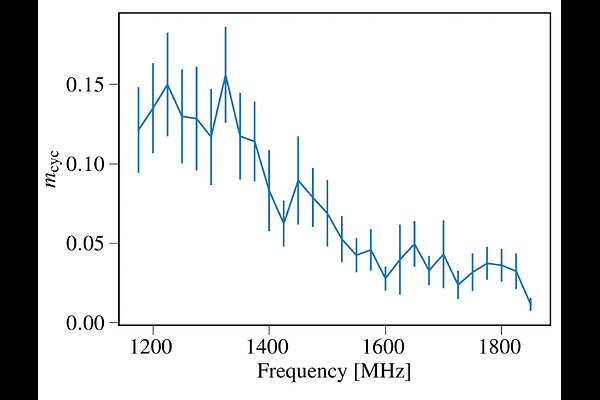Pulsar Cyclic Spectroscopy in the Partial-Deconvolution Regime: Benefits & Limitations

Pulsar Cyclic Spectroscopy in the Partial-Deconvolution Regime: Benefits & Limitations
Jacob E. Turner, Timothy Dolch, Paul B. Demorest, Ryan S. Lynch, Daniel R. Stinebring, Cody Jessup, Nathaniel Jones, Christopher Scheithauer
AbstractWe explore possible advantages of cyclic spectroscopy for observations of pulsars in instances where full cyclic deconvolution is not feasible. We compute cyclic merits and full-deconvolution regime boundaries for pulsars observed by NANOGrav and discuss which sources stand to benefit the most from using cyclic spectroscopy when observed with the Green Bank Telescope and DSA-2000 in a given frequency range. We compare data products, namely the wavefield, in both full-deconvolution and partial-deconvolution regimes to demonstrate what can be accomplished with incomplete phase retrieval. Additionally, we show how some phase retrieval can still be achieved in the partial-deconvolution regime and how this allows for additional information in scintillation-based data products, like the dynamic wavefield power, compared to what can be found in traditional dynamic spectra. An examination of dynamic wavefield phase as a function of observing frequency reveals more complete phase retrieval is achieved the closer one gets to the full deconvolution regime, agreeing with the expectations of cyclic merit. While we demonstrate that fragmentary recovery of the secondary wavefield can be accomplished in the partial-deconvolution regime, we advocate for a synergistic approach with phase retrieval methods like the $\theta-\theta$ transform, although we also provide discussion about shortcomings of this strategy. Finally, we use the combination of modest cyclic merit and lack of discernible results for PSR J1903$+$0327 to motivate the creation of an updated "cyclic merit 2.0", which relies on scintillation bandwidth instead of observing bandwidth.